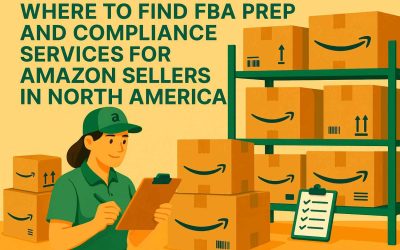Happy Monday to everyone! As part of our new series, we are proud to present you the second company to feature in this blog series – Kabel Net. Television rules the nation. It did, and for some generations it still does. One who broke the television silence in...

Kim Hehir and Sue Delegan – keeping your pet happy and healthy
It’s never only one reason that encourages people to become entrepreneurs. Being aware of that or not, entrepreneurship is always provoked by several problems in your life. For women, that often includes being under-appreciated as an employee or underestimated as a woman in the business world.
For Kim Hehir and Sue Delegan, founders of Brutus Broth it was Sue being laid off from her job while on maternity leave and the necessity of nutritional and easily digestible meals for their dog, Brutus. Facing the problem and deciding to take destiny into your own hands it’s the best decision you can make when found in a place like Sue.
So whether you are here to get inspired and encouraged to define your career as a businesswoman, or to find out why Kim and Sue are your pet’s best friends, their story will not leave you indifferent.
Feeling under-appreciated as an employee, a nonexistent work-life balance, financial struggles, getting out of bad relationships – these are the most common triggers that push women to become entrepreneurs. Tell us about your trigger?
Growing up, our father was an entrepreneur, which helped foster the desire to have our own business one day. But, my trigger came when I was laid off from my job while I was on maternity leave. The Board claimed that my position had been cut from the budget. But, it was impossible for me not to feel that having a baby put a target on my back as the one that was “easiest” to let go of. It was truly a defining moment in my career as a woman.
How did you come up with your business idea?
Our story began on Thanksgiving Day 2016 when a family member asked to what we attribute our dog Brutus longevity. The answer is love and grandma’s bone broth. As a pup that led a very active life, he had several health issues most senior dogs face. We found that adding bone broth to his diet not only provided him with a tastier, more easily digestible meal but gave him added nutritional benefits.
People started asking where they could buy the bone broth we gave to Brutus. That is when we decided to bring it to market and make it accessible to all dog owners. We believe you don’t have to be a millionaire to feed your dog good food, that is why we created a high-quality product at an affordable price.
Have you had support from someone, even if just encouragement? Who was that and how did it help you?
Besides each other, our father has been our biggest supporter. He believed in what we wanted to do from day one and helped us build the business – lending not only emotional support and encouragement but also guidance on how to grow our business.
Female entrepreneurs are often underestimated and overlooked. Have you ever felt at a disadvantage?
The pet business is sometimes “an old boys network” – especially when it comes to manufacturers. When we first started the business, it was hard not to feel like some manufacturers weren’t taking us seriously and treating us differently than our male counterparts. As we’ve grown and gained success, they realize that we’re a fierce force to be reckoned with.
Some say it’s hard work, others say it’s talent and resourcefulness that play a crucial role for success in entrepreneurship? Which traits have been instrumental for your success so far? And why?
For us, it’s both. Our father used to say, “If starting a business was easy, everyone would do it”. Being an entrepreneur is synonymous with hard work. You can’t run a business if you’re not willing to put in the work. It’s a misconception that all entrepreneurs have a team of people working for them. The reality is that when you first start, it can sometimes be just you, or in our case just us, for a long time.
It takes a certain amount of talent to be an entrepreneur. Everyone has something they’re good at. The key to good entrepreneurship is to leverage that talent and use it to your advantage. Along with talent, resourcefulness is a must! Every entrepreneur is faced with challenges that require quick thinking and the ability to pivot. When building Brutus Broth, we were faced with more challenges than most people could handle. Those obstacles forced us to think quickly and cultivate the characteristics of a successful entrepreneur to keep moving forward!
What excites you the most about being an entrepreneur?
Walking into a store and seeing a product that we brought from concept to shelves with our hard work and dedication. It’s even more exciting to see a customer pick up your product and put it in the cart and be able to tell him or her, “I created that!”. Sue still loves seeing customer’s faces when she tells them that Brutus was our dog!
Share with us some of the worst business advice you’ve ever received?
This is a hard one because we both usually try to let the bad advice go in one ear and out the other! But in all seriousness, when researching Brutus Broth, Sue met a small business owner at a trade show that warned her to not get into the pet industry because it was too competitive and there wasn’t space for a small company like Brutus Broth.
During our research, we found that there were two types of pet businesses. There were small, family-owned businesses that offered innovative products but couldn’t scale like ours, and large corporations like Purina that owned the majority of the market share. What we noticed was there was a gap in the market of artisanal, natural products that were offered in the mass market and could scale. Understanding that gap in the market led us to position ourselves as experts in a niche market, with a product that was accessible to every pet owner.
You’ve got a high stake investment opportunity. Pitch your business in 150 words.
Brutus Broth offers all-natural, innovative Bone Broth products to dog owners at an affordable price. Bone Broth has been used for thousands of years by humans for overall health, our product now allows pet owners a convenient way to offer their pets the same health benefits to their existing diets. Brutus Broth aids in digestion, helps to detoxify, and supports joint and hip health with added glucosamine and chondroitin.
Our mission is to provide nutrition to your pet while giving back to the community. We have partnered with some of the top manufacturers in the country to create some of the best products in the pet food industry. Since our launch with Wegmans and Big Y Food markets in May 2018, we’ve grown over 2,000% and can now be found nationwide at various regional grocers, pet specialty markets, and at big retailers, like Target and Petco. As a company, we focus on quality products, sustainability, and making a difference to animals nationwide.
What’s the best piece of advice you’d give to inspire aspiring entrepreneurs?
Perseverance and entrepreneurial mindset are everything! There will be many times that you’ll want to give up and people will tell you “no” more than “yes”. As an entrepreneur, you have to have the unshakable belief that you can succeed. Mind is a very powerful thing so if you don’t believe you can achieve your goals, you won’t.
What are your goals for the upcoming year?
Our goals are to continue to bring nutrition to every dog in America. We are currently working on some functional broths that will address specific health issues in dogs. We would also love to work on some collaborations with other companies that share similar values and goals as Brutus Broth.
Any final words to end this interview?
One of the things we get asked a lot is “how is it working with your sister”? It helps that we live 5,000 miles apart. But in all honesty, we are lucky that we each play off of each other’s strengths and weaknesses. Kim’s strengths are my weaknesses and vice versa. We also know when the other needs a mental break, we are there to step in for one another if someone needs to take an afternoon off.
Connect with Brutus Broth on Enterprise League
More must-read stories from Enterprise League:
- Learn more about dealing with rude customers in 14 different ways.
-
Find out more about Google Advertising for small businesses: 27 golden rules by seasoned experts.
- Here is how to start a wholesale business from scratch and succeed..
- Read more about TikTok Marketing 101: How small business can get the most of it.
- Learn how to turn your hobby into a business + 9 examples.
Related Articles
Tekrevol – From a small bedroom to Houston, San Francisco & New York
Looking for the best app development company in the USA? Come and meet Tekrevol – sharp professionals delivering top-notch tech solutions.
Halo Coffee – The greenest coffee pods in the world
It’s always remarkable when a business is born out of selflessness and love for the environment. One such business is Halo Coffee – a company that makes Nespresso compatible compostable coffee pods.



























